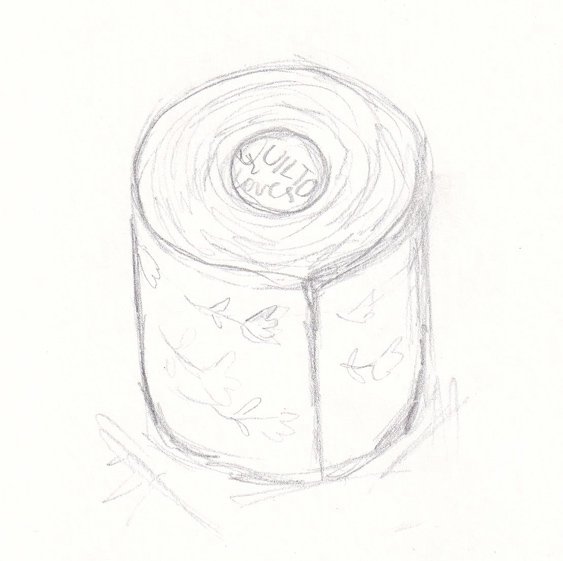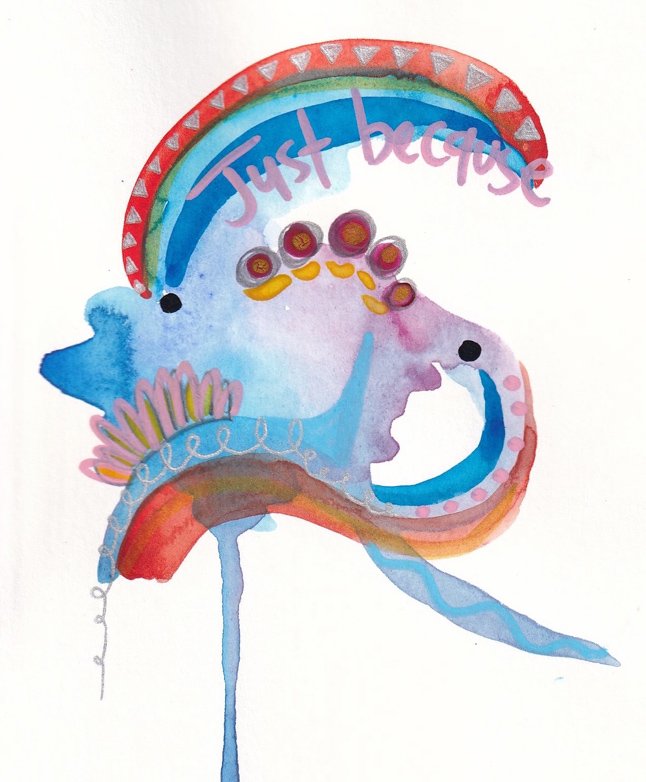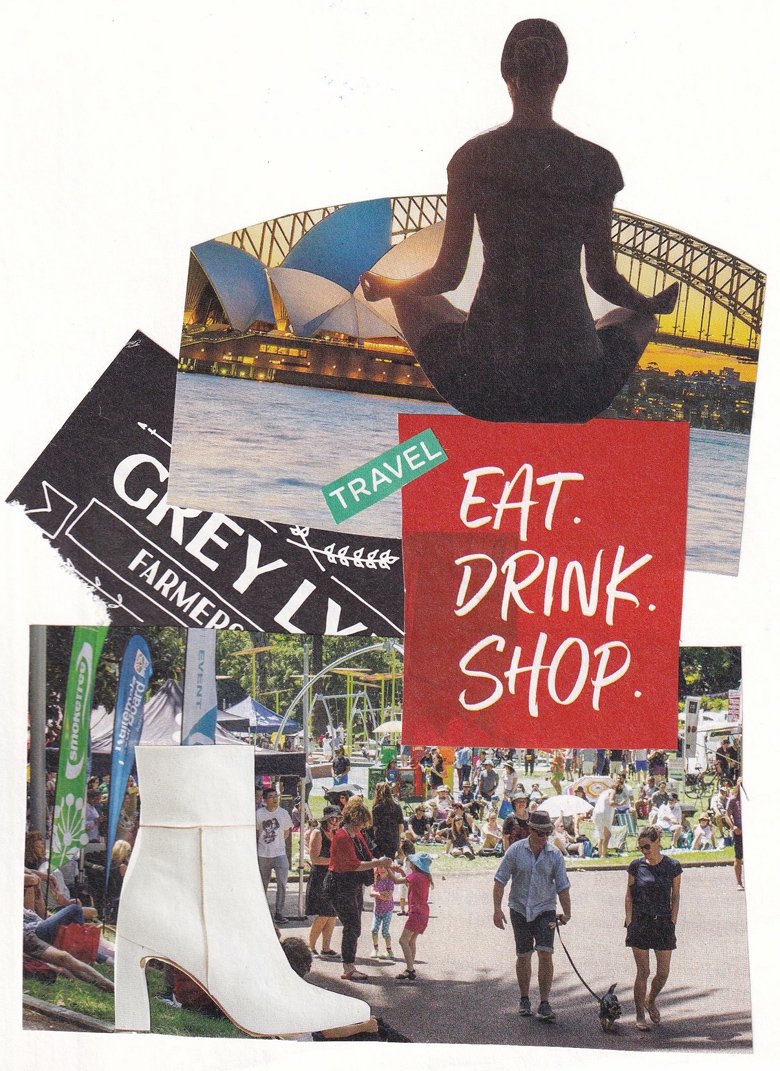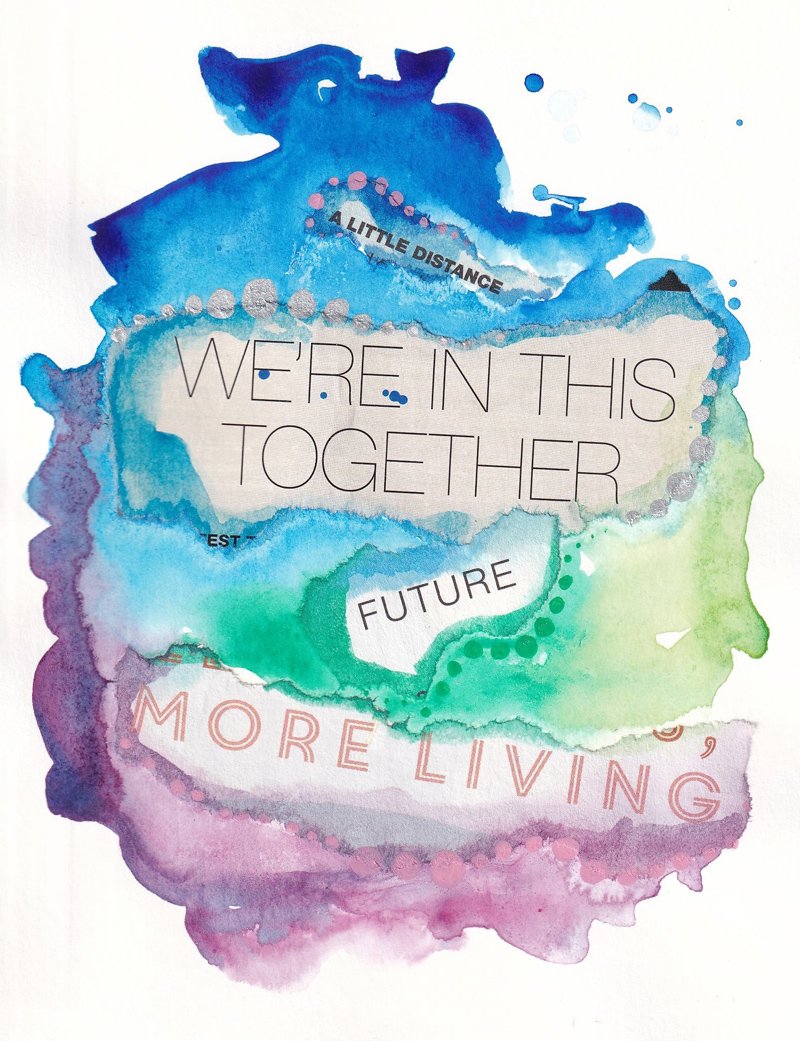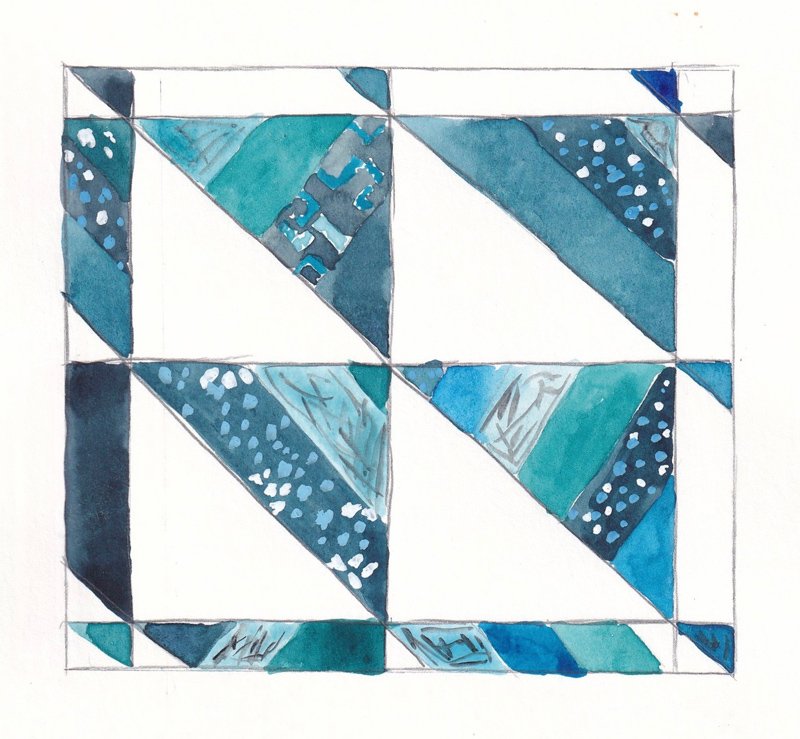Published:
December 2020
Issue:
Vol.15, No.1
Word count:
3309
About the author
-
MAATh, GradDipATh, GradDipPsyc, BArtEd, AThR
Sasha is a registered art therapist who specialises in adolescent mental health, special education, women’s health and rehabilitation. With a background in education and psychology, she undertook art therapy studies at La Trobe and Western Sydney Universities. Sasha has extensive experience working across mainstream, hospital and special education contexts, and works therapeutically with both individuals and groups. After relocating from Melbourne to Auckland in December 2019 and dedicating 2020 to enjoying time with her newborn son, Sasha will begin private practice in 2021, with a particular interest in adolescent mental health in the community.
This work is published in JoCAT and is licensed under a CC BY-NC-ND-4.0 license.
Newborn in pandemic: Creativity in isolation
Sasha Iyengar
Abstract
At 11.59pm on 25 March 2020, I found myself, a new mother recently arrived in a new country, facing mandatory isolation in the midst of a global pandemic. On the eve of this isolation period, I pledged to create a piece of art for each day of the lockdown. Thirty-three artworks were made during stolen moments folded into the rhythm of life with a newborn. What seemed to characterise this time was a tension between the love, hope and beauty associated with a newborn and the pervasive fear, uncertainty and anxiety associated with Covid-19. Making art provided a significant space for me to engage in self-care while untangling and processing this tension – exploring identity and the transition to motherhood, in isolation and isolated from family abroad. The artworks I created helped me make sense of and accept uncertainty in this rapidly changing world.
Keywords
Self-care, pandemic, creativity, motherhood, art therapy.
Lockdown
Our son was born on 2 March 2020, the day after the first person contracted Covid-19 here in New Zealand. We had moved from Melbourne to Auckland in December 2019, during the last trimester of my pregnancy. My husband was working long hours as an essential worker at the hospital and I found myself in a situation I’d never expected to be in: socially isolated overseas, at home with a little human to nourish and keep alive. When Level 4 lockdown came into effect at 11.59pm on 25 March 2020, we were mandated to isolate for one month with our immediate household. For some families this would mean even more time together, as most people were required to work and study from home. The creativity and closeness that radiated from within many of these homes were celebrated. In contrast, for others the lockdown experience was incredibly isolating and even unsafe.
I was suddenly thrown into the surreal situation of living in a bubble, inside a bubble. The initial weeks of life with a newborn are often coloured by exhaustion and sleep deprivation. My own experience was both fragile and wonderful. Learning to cope and manage by myself for many hours during the day was imperative. The isolation I felt as a new mother at home became inextricably linked with the sense of situational isolation that came with being cut off from social contact during lockdown. Was it meant to be this hard? Would I have felt this way outside lockdown? Increasingly I felt emotionally depleted and self-care often fell down the list of priorities.
Being an art therapist comes with the inherent understanding that creativity is a basic human need, a vehicle for coping and processing. I had witnessed and companioned hundreds of people making art across a variety of therapeutic contexts. While I had seen and advocated for the undeniable value of creativity for health and well-being, I battled inertia when attempting to engage in art-making for my own self-care. As the Covid-19 crisis unfolded in front of my eyes, I realised I had to integrate self-care or else I’d be in trouble.
Making art seemed to be the most accessible and meaningful outlet I could think of. Every day during lockdown I sat and made art, sometimes for barely a few minutes. The experience was transformative, each day bringing me home to myself and allowing me to feel the ground beneath my feet.
On reflection, several themes resonate through the 33 artworks I created during lockdown. The italicised text accompanying the artworks was written alongside their creation. Woven together, they provide a tangible record and tell a story of my experience and learning during this time. Some artworks are about self-care, while others symbolise the transition to motherhood isolated in a new country, interrogating a changing identity against the backdrop of Covid-19. Many artworks reflect my need to process the emotional content of everyday experience, fragments of trauma related to my birth experience and grief associated with being cut off from family and loved ones overseas.
Accepting and ultimately learning to live with uncertainty was a constant challenge and some artworks testify to this. I found solace in how blissfully unaware my newborn son was of this struggle, his cries and soft touch bringing me back to the present moment. As we moved further into isolation, his little toes uncurled and his eyes opened wide to the world around him. As the world I had known felt like it was closing in around me, his was blossoming. Making art during this time became the antidote to a heavy heart and, as a result, a sense of hope and optimism for the future emerged.
Figure 2. Cox’s Bay.
Figure 1. Monstera.
Figure 3. Keep calm and step away from the toilet paper (Day 6).
Figure 4. Just because (Day 18).
Figure 5. Just because no. 2 (Day 25).
Figure 6. Little me (Day 16).
Figure 7. Little hands of yours. Wanting each day to create an imprint of this moment in time, to hit pause while the world catches up (Day 8).
Figure 8. Immunisation day. My beautiful boy is 6 weeks old (Day 21).
Figure 9. Redsbaby.
Figure 10. Lanterns.
Figure 11. Through blurry eyes.
Figure 12. Muslin wrap.
Figure 13. Meditating on some of those things I miss (Day 24).
Figure 14. Mum’s mug (Day 7).
Figure 15. Champagne cork (Day 2).
Figure 16. The smallest of things, folded in time.
Figure 17. Like ripples, we hope this work will change the tide (Day 4).
Figure 18. Two metres.
Figure 19. Polaroid.
Figure 20. Just keep swimming, just keep swimming (Day 13).
Figure 21. Paper-plane pants.
Figure 22. More living.
Figure 23. Little blue triangles.
Self-care in isolation
I have always been good at self-care, but I had never felt more challenged to weave it into my every day. Life with a newborn came with a particular type of intensity that sometimes left me feeling dazed. Part of my commitment to caring for myself was noticing and acknowledging joy in fleeting moments as the day unfolded. Having a quiet moment to finish a cup of tea while it was still hot, or washing my hair, became important luxuries.
As I spent hours at home – particularly in one spot breastfeeding – I became mindful of things I’d normally rush past in my everyday life. My tired eyes surveyed my surroundings and sparked a renewed interest in the beauty of mundane or unnoticed things. Drawing from life built upon this mindfulness, slowing time down and bringing me back into my own body. Reflecting on small things in my environment brought me unexpected joy, a sense of steadiness. Even when I felt stuck, things were moving and flourishing around me.
The monstera plant is growing so big. I imagine one day it might take over the entire lounge room… (Day 9). (Figure 1. Monstera.)
Today the sky opened and the rain tumbled. The bay shone with bright shards of silver below a blurry lead sky. I was so relieved getting outside this afternoon for a walk with the pram that I barely felt the rain (Day 20). (Figure 2. Cox’s Bay.)
The use of humour was significant in lending me a sense of control during a time when I had little. Among piles of washing and dirty nappies, I was surprised by the things that made me laugh. One morning I read news of a toilet paper shortage due to people panic-buying when the pandemic first hit – a completely unhelpful reaction to Covid-19. The crisis seemed to have the capacity to bring out either the best in people or the absolute worst. I expressed my amusement in a drawing of a toilet roll. (Figure 3. Keep calm and step away from the toilet paper (Day 6).)
The simple act of engaging with the sensory qualities of art materials provided me with valuable self-care. Despite having access to a multitude of materials, I often gravitated towards watercolour. My travel watercolour set was convenient and quick to use, with minimal cleaning up. I found the immediacy of the medium and the flow of colour as it spilled across the page deeply cathartic. I created two paintings that were completely spontaneous in composition, expanding from a joyful mark on the page. These were created because they ‘just felt good’. (Figure 4. Just because (Day 18); Figure 5. Just because no. 2 (Day 25).)
One day I came across a packet of unopened connector pens. These were a familiar and nostalgic medium from my childhood. My curiosity was ignited as I recalled a flower that I drew incessantly as a child. Now, aged 32, I re-drew this flower as an ode to my child self. My mind became still as it traced the memory of the flower, with its simplified lines and naïve blocks of colour. On reflection, I needed time away from my son in order to reconnect with this part of me. I didn’t want to forget this child within, as she would help when my brain was too tired to think straight. As my son slept soundly in the next room, I gave myself permission to feel connected to her. (Figure 6. Little me (Day 16).)
Identity/motherhood
During lockdown I was adapting to my new identity as a mother and isolation seemed to heighten the intensity of this experience. I envisioned that our son would be raised by a village, yet the pandemic created a sense of unimaginable distance – the world and my loved ones felt so far from me. For many hours at a time, I didn’t have anyone to pass my baby to and exhaustion led to a feeling of numbness. My artworks were a way of marking time, when I often felt like I existed in a different time zone. I could only create when my husband was home from work, when I knew our son was safe and sound. Physically taking time away from him was initially difficult, although deeply nourishing. The time that I spent making art grounded me and helped me feel present with myself, with my baby. Through these creative moments, my sense of motherhood grew.
I took my son’s handprints and footprints when he was one month old. This proved a difficult task, as his inbuilt grasp reflex caused his little fingers to curl up tightly. A few days later I made a watercolour painting of one of his little handprints (Figure 7. Little hands of yours. Wanting each day to create an imprint of this moment in time, to hit pause while the world catches up (Day 8). The print was imperfect but simultaneously precious as it was a tangible record of a point in time that was so often absorbed in the constant change of infancy. The act of painting from the print slowed time down further and allowed me to regain a sense of control, to reflect and memorialise the moment. (Figure 8. Immunisation day. My beautiful boy is 6 weeks old (Day 21).)
When the hours of lockdown felt long, I clung to routine during the day as a way to cope with sleep deprivation. Interestingly, the creation of the artworks themselves also became a routine during this time. Some artworks reference and honour these routines and the comfort I took from them. I would walk every morning while my son slept in the stroller, a quiet time to myself.
My everyday companion, rolling along in front to the rhythm of my breath as it becomes slow and calm. Gentle rocking lulls my love to sleep, and my eyes open to the sky around me (Day 26). (Figure 9. Redsbaby.)
These lanterns glow softly above our bed. Coloured often by exhaustion, they shed beautiful light over night-time feeds (Day 11). (Figure 10. Lanterns.)
The most glorious sunshine
And sparkling blue
Through blurry eyes,
A sleepless night.
Like shifting time zones,
We fell out of sync.
Carrying love,
Tomorrow will be new
(Day 28).
(Figure 11. Through blurry eyes.)
Processing emotion, untangling tension
Making art provided me with a way to process emotion and explore the contradictory nature of my situation. I experienced a tension between the joy and love I felt for my baby and the pervasive anxiety and fear associated with the pandemic. My personal feelings of hope and beauty associated with newborn life felt somewhat abstract when placed against the backdrop of Covid-19. Figure 12 captures the contrasting and coexisting emotions of comfort and joy in holding him to feed, while feeling a profound sense of sadness that his family hadn’t met him.
I stare at the weather pattern on his muslin wrap as we sit together curled up feeding. One month old today, he hasn’t been held by most of his family (Day 5). (Figure 12. Muslin wrap.)
I found some local magazines full of beautiful images of community events, upcoming festivals and reviews of local exhibitions and new cafés. It made me sad to think of those things which I miss filling our weekends with. I think of friends and family in hospitality and the arts, and how hard it must be through this time. I hope the world realises it needs the arts to help fuel our future as humans and that political bodies realise this. I am filled with anticipation for the announcement tomorrow – will we move down to Level 3 lockdown?
(Figure 13. Meditating on some of those things I miss (Day 24).
Connection
It felt as if an invisible wall now surrounded our life. I had imagined the first couple of months of my baby’s life would be filled with family and friends. Nothing had quite prepared me for this new reality. Everything seemed to remind me of family, including this mug I saw every morning. (Figure 14. Mum’s mug (Day 7).)
I yearned for connection during lockdown and, as the days and weeks passed, I was surprised by the ways I was able to source this connection with other people. While it wasn’t quite the same, video chatting with family and friends became the norm. On the second day of lockdown we had a video call with my immediate family in Australia, split between Darwin, Sydney and Newcastle, to celebrate my sister-in-law’s birthday.
Dressed up, laughing at the screen, we drank champagne and pretended we were all together (Day 2). (Figure 15. Champagne cork (Day 2).)
Another source of connection with people during lockdown was the assortment of parcels that arrived on our doorstep, often through international post. This vicarious connection was a greatly appreciated source of joy for me. Particularly interesting was the number of handmade gifts we received. Stuck within their four walls, people seemed to be making things.
Today I opened the front door to a pile of curious parcels from loved ones! One contained the most beautiful, colourful knitted jumper for (our baby). Alongside this delightful handmade gift was tucked a little origami deer (Day 27). (Figure 16. The smallest of things, folded in time.)
Living with uncertainty
The unpredictability of the watercolour bleeding across my page echoed the uncontrollable nature of my immediate situation. The spontaneous creation of these artworks became a way for me to process uncertainty about the world and ultimately come to accept and live with an uncertain future. What future would be carved for my baby? What will the world be like? As I put my son to bed and sat to create, I realised I didn’t have answers to these questions. What I did have was a way to sift through the unease and dissonance associated with this uncertainty. Concretising this uncomfortable feeling by making images gave me reflective distance, a ledge on which I could stand to look at the bigger picture.
During the initial days of lockdown, certain artworks explored societal observations and relayed my understanding of needing to ‘do my part’ to eradicate or, at the very least, control this virus. Figure 17 symbolises this notion of being part of the collective ‘we’ to create change. This macro lens on the broader experience of my new country and feeling ‘part of the team’ reduced my feelings of anxiety about isolation. Naturally, this also meant that these artworks were existential in nature. (Figure 17. Like ripples, we hope this work will change the tide (Day 4). (Figure 18. Two metres.)
The streets still bathed in sunshine – feel eerie. People walk solo or in pairs, two metres apart (Day 1).
The watercolour painting in Figure 18 is an abstract portrayal of the experience of my first walk on Day 1 of Level 4 lockdown. My first observation of social distancing is symbolised by spontaneous blobs of colour, spaced on a white page. It felt apocalyptic at the time and surreal to witness.
Hope for the future
Sitting and engaging with art materials gave me respite from the anxiety surrounding the uncertainty of lockdown. Gradually learning to live with and accept uncertainty freed me to contemplate hope for the future. Several artworks symbolise this hope – one day I would be reunited with friends and family.
Soon after arriving home from hospital I began taking Polaroid snaps of the first of our friends to meet (our son). These friends were so valuable in supporting me when my husband went back to work full time. I attached these polaroids to a wall under the window ledge in a beautiful line that abruptly stopped the day our isolation began. I can’t wait to continue it (Day 10). (Figure 19. Polaroid.)
The collage shown in Figure 20 was created on a particularly difficult day, when I felt physically and emotionally depleted. I felt as if I was swimming in circles. Even though it was disorienting, I knew I had to ‘just keep swimming’. If I kept moving forward, tomorrow would come and with it a new day.
I felt tenderness and a kind of nostalgia towards our son’s growth as he fitted into bigger and bigger clothes, which I imagined he would one day grow out of too. While it was sometimes difficult to imagine the future, I knew that inevitably one day he would grow up and I carried hope for his future in this world that would one day heal.
(Our little boy) has changed so much even in these two weeks – he now fits into these adorable paper-plane pants. One day he’ll be big enough to make and throw paper planes (Day 15). (Figure 21. Paper-plane pants.)
I approached the end of lockdown with a feeling of optimism, despite the government’s decision to extend the isolation by a few days. This feeling was translated through the following text and the mixed-media artwork shown in Figure 22.
ONE MONTH in lockdown. A little distance, a little longer.
This morning we were meant to wake up to the end of Level 4 lockdown in New Zealand, and with it the end of my pledge to create an artwork every day. However, with the extension of the lockdown to 11.59pm Monday, I shall carry on! (Day 29). (Figure 22. More living.)
Closing
Art-making provided me with a nurturing routine of self-care and a way to cope and process my emotions during lockdown. My artworks speak to me of the struggle to adapt to motherhood in isolation, but also of the beauty associated with this new identity. They captured the connection I yearned for and celebrated those I love who felt so far away. They were a way to reflect on my place in the world and challenged me to keep moving forward in the best way I knew how.
The subjective meaning imbued in my artwork shifted over the course of lockdown. In my initial art-making, I reflected on the broader societal context of Covid-19. As time passed in isolation I became more introspective. Many of my later artworks are closer to the raw reality of motherhood in this context and are contemplative in nature. My most profound learning was to accept uncertainty and learn to live with it, while maintaining hope for the future.
Writing this article two months after the end of the first nationwide lockdown of 2020 in New Zealand was valuable in allowing me to view my artwork with reflective distance. As the days of lockdown passed me by, a heightened sense of gratitude grew inside me. I was grateful for my safe home, supportive husband and healthy child.
Lockdown inevitably amplified disadvantage for some individuals and families and would continue to do so for a long time. I am increasingly aware of my own privilege and consider myself fortunate to live in a country that is faring so well in comparison with many others. Covid-19 is still ravaging our world as I type these words and returning to normality feels unfair, even strange, against this reality. This same tension resonates with my time in lockdown, when I grappled to make sense of the tension between the joys of life with a newborn and the fear and anxiety associated with Covid-19. I will conclude with my final artwork, created on Day 33 of lockdown here in New Zealand (Figure 23. Little blue triangles.)
Little blue triangles, I tread lightly across you in the middle of the night, my little love clutched to my chest. Little blue triangles, we lie together, him now smiling up at me. Little blue triangles, you’ve witnessed half-naked stumbles, laughter and tears. Little blue triangles you’ve measured the love of our life.
Our beautiful boy turned two months on Monday, the same day the level 4 lockdown lifted in New Zealand. I’ve cherished marking each milestone with a photograph of him lying on a quilt handmade by our dear friend in Italy. This is a little watercolour of a section of this quilt. It is a beautiful way to measure time and growth and holds a sweet symbolism – how many triangles will you be next month, my
little love?
As the lockdown lifts, so too comes to a close my pledge to create a small artwork every day for its duration. This endeavour has brought me joy and precious moments of self-care. It has given me space to see through the sometimes fog of exhaustion that accompanies life with a newborn in isolation. It has provided me with a space to celebrate, to cry, to process, to mourn and to nourish.
Thirty-three days of making draw to a close, a lifetime of making lies ahead, until then…




